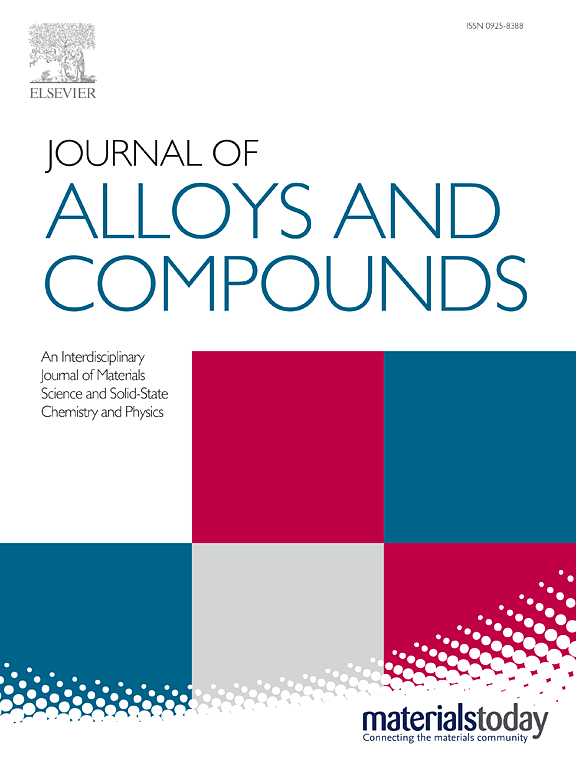超越传统方法的高迁移率Cu2O输运层的溶解定制电沉积
IF 5.8
2区 材料科学
Q2 CHEMISTRY, PHYSICAL
引用次数: 0
摘要
钙钛矿太阳能电池(PSCs)需要具有高载流子迁移率、结构稳定性和优异薄膜质量的空穴传输材料(HTMs)。氧化亚铜(Cu2O)是一种具有2.17 ev直接带隙和固有空位的无机p型半导体,是一种很有前途的替代不稳定有机HTMs的材料。本文采用双向脉冲(BP)电沉积方法克服了传统直流(DC)方法的局限性,这种方法由于单向沉积而积累了Cu 2 +的杂质、无序颗粒和高表面粗糙度。通过引入周期性溶解相和精确调节正向/反向电压(-0.4 V沉积;0.03 V溶解),实现了沉积-溶解-再沉积的动态平衡。该工艺选择性地消除了高能晶体面/缺陷,同时促进了(100)取向生长,得到的膜具有显著提高的相纯度(77.38% Cu+ vs. 55.89% DC)和原子光滑的表面(Ra <;5.00海里)。优化后的BP-Cu2O薄膜具有优异的光电性能:载流子迁移率(46.14 vs. 42.12 cm2/V·s),载流子密度(9.06 vs. 8.09 × 1021 cm-3),电阻率降低10% (1.62 vs. 1.73 × 10-5 Ω/cm),可见光透过率92%。这项工作建立了BP电沉积作为高性能Cu2O HTLs的单步,无后处理策略,为高效稳定的psc提供了可行的途径。本文章由计算机程序翻译,如有差异,请以英文原文为准。

Dissolution-Tailored Electrodeposition of High-Mobility Cu2O Transport Layers Beyond Conventional Methods
Perovskite solar cells (PSCs) require hole transport materials (HTMs) with high carrier mobility, structural stability, and superior film quality. Cuprous oxide (Cu2O), an inorganic p-type semiconductor with a 2.17-eV direct bandgap and intrinsic vacancies, is a promising alternative to unstable organic HTMs. Herein, bidirectional pulsed (BP) electrodeposition is employed to overcome limitations of conventional direct current (DC) methods, which accumulate Cu²⁺ impurities, disordered grains, and high surface roughness due to unidirectional deposition. By introducing periodic dissolution phases and precisely regulating forward/reverse voltages (-0.4 V deposition; 0.03 V dissolution), a dynamic deposition-dissolution-redeposition equilibrium is achieved. This process selectively eliminates high-energy crystal facets/defects while promoting (100)-oriented growth, yielding films with significantly enhanced phase purity (77.38% Cu+ vs. 55.89% for DC) and atomically smooth surfaces (Ra < 5.00 nm). Optimized BP-Cu2O films exhibit superior optoelectronic properties: carrier mobility (46.14 vs. 42.12 cm2/V·s), carrier density (9.06 vs. 8.09 × 1021 cm-3), 10% lower resistivity (1.62 vs. 1.73 × 10-5 Ω/cm), and 92% visible-light transmittance. This work establishes BP electrodeposition as a single-step, post-processing-free strategy for high-performance Cu2O HTLs, providing a viable pathway toward efficient and stable PSCs.
求助全文
通过发布文献求助,成功后即可免费获取论文全文。
去求助
来源期刊

Journal of Alloys and Compounds
工程技术-材料科学:综合
CiteScore
11.10
自引率
14.50%
发文量
5146
审稿时长
67 days
期刊介绍:
The Journal of Alloys and Compounds is intended to serve as an international medium for the publication of work on solid materials comprising compounds as well as alloys. Its great strength lies in the diversity of discipline which it encompasses, drawing together results from materials science, solid-state chemistry and physics.
 求助内容:
求助内容: 应助结果提醒方式:
应助结果提醒方式:


